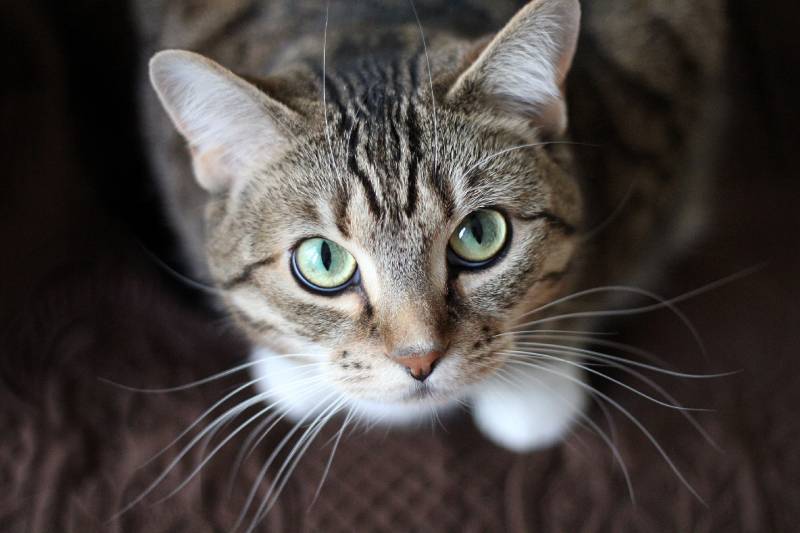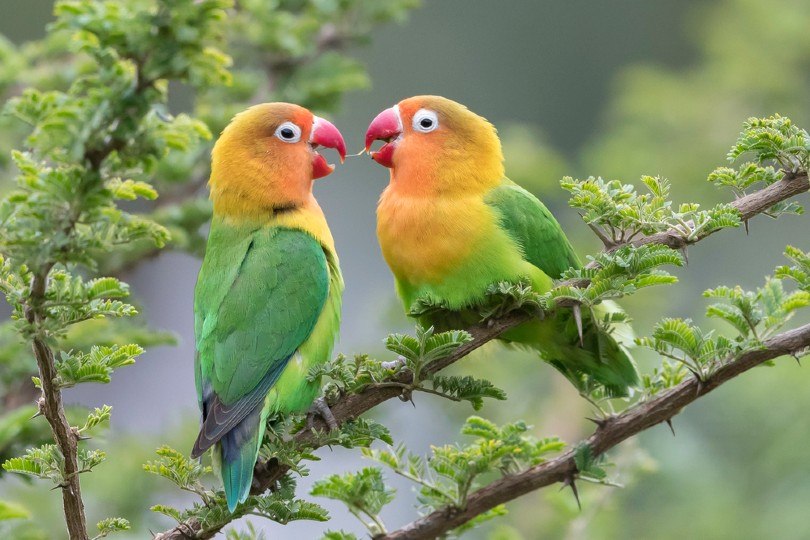VET APPROVED

The information is current and up-to-date in accordance with the latest veterinarian research.
Learn more »Click to Skip Ahead
Cats are known for having long whiskers. These whiskers can tickle people when cats come in for affection and pets. Whiskers are actually extremely important for a cat’s behavior and health. But do all cats have whiskers? For the most part, yes. All typical cats have a certain number of whiskers. However, there are some exceptions.
Here is what you need to know about the importance of cat whiskers, how to care for them, and what cats are devoid of these helpful appendages.

Cat Whisker Anatomy
The vast majority of cats have a multitude of whiskers on their faces. Cats can have anywhere from 12 to 36 whiskers depending on their individual characteristics. Cats typically have two even sets of whiskers, one on each side of the face. They can also grow whiskers above their eyes and sprout whiskers under their chins. Additionally, cats have carpal whiskers behind their front legs in the wrist area.
Whiskers provide a number of essential benefits for cats, including helping them to move around in the dark, measuring distances, sensing vibrations in the air, and displaying emotions for other cats to pick up on. For these reasons, almost every cat has whiskers. From the smallest house cats to the largest wild cats, whiskers are ubiquitous. However, there is one big exception that has been growing in recent years.

The Hairless Exception
Some hairless cats may not have any whiskers at all. The gene that makes a cat hairless also prevents them from growing whiskers. The Sphynx breed is notable, as many have no visible whiskers at all. Hairless cats may also lack upper whiskers and eyelashes. While the Sphynx is the most common breed of cat to lack whiskers, any hairless cat has the potential to be unable to grow whiskers of any kind. Nevertheless, some hairless cats may have a few short, sparse, short, curly, brittle, or patchy whiskers.
In nature, this feature is exceedingly rare. Since whiskers are so valuable to a cat’s behavior, any cats in the wild without whiskers start at a distinct disadvantage. However, thanks to breeding and the explosion of internet trends, more people are interested in obtaining their own hairless cat, making the number of cats without whiskers larger than before.
Is a Lack of Whiskers a Problem?
Yes. Cats are designed to live with whiskers. Not having whiskers is a problem. Veterinarians say that cats without whiskers are blindfolded compared to cats with whiskers. The problem has become so acute that some governments are attempting to outlaw the breeding and trading of hairless cats citing these health problems. A German court ruled that breeding hairless cats were “cruel” and ordered a pet owner to have their cat fixed so that it could not reproduce. That is because being completely hairless is not a natural state for a cat to exist in, and one of the most significant losses is the whiskers.
How to Care for Your Cat’s Whiskers
The best way to care for your cat’s whiskers is to leave them alone. Whiskers are very sensitive, and cats do not like it when you mess with them in any way. Whiskers can fall out, regrow, or become damaged over time. All of that is natural. The whiskers will manage themselves with little input from you.
If you are concerned about your cat’s whiskers, you should take them to the veterinarian. Since whiskers are so important, you should have a professional deal with them. Do not try to treat or fuss with your cat’s whiskers at home. In most cases, the whiskers will be in a state of regrowing or healing themselves over time.
Can You Trim a Cat’s Whiskers?
No. Absolutely not. Some cats have extremely long and thick whiskers. Sometimes they can look very overwhelming, but you should absolutely never trim them. Trimming a cat’s whiskers can disorient them, and it can disrupt the natural growth cycle of the whiskers. A cat that is used to having its whiskers can start acting scared and anxious if you trim their whiskers. It would be similar to shortening a person’s fingers or arms. Cats are used to their whiskers being a certain way and trimming them can be a significant problem.

Conclusion
The vast majority of cats have whiskers. The only exceptions are certain hairless cats. Whiskers are tied to the gene that causes a cat to grow hair, so some hairless cats can grow up without any whiskers at all. This is not a good thing, and it has raised ethical concerns about the rearing and breeding of hairless cats. Some countries are even moving to ban hairless cats due to the fact that missing fur and whiskers is not good for a cat’s overall health.
- Related Read: Cat Anatomy 101: Understanding Your Cat’s Body
Featured Image Credit: Jumpstory












